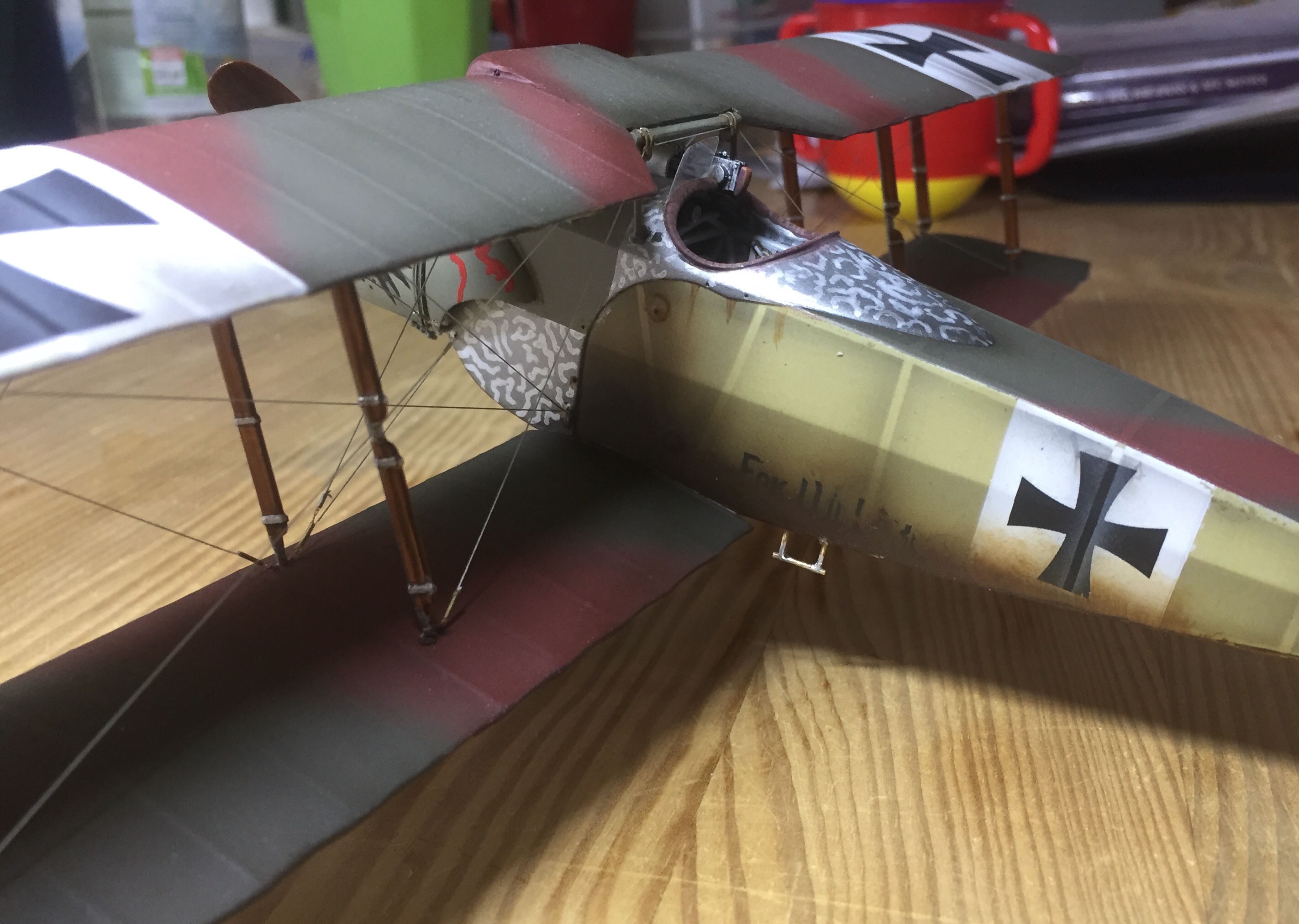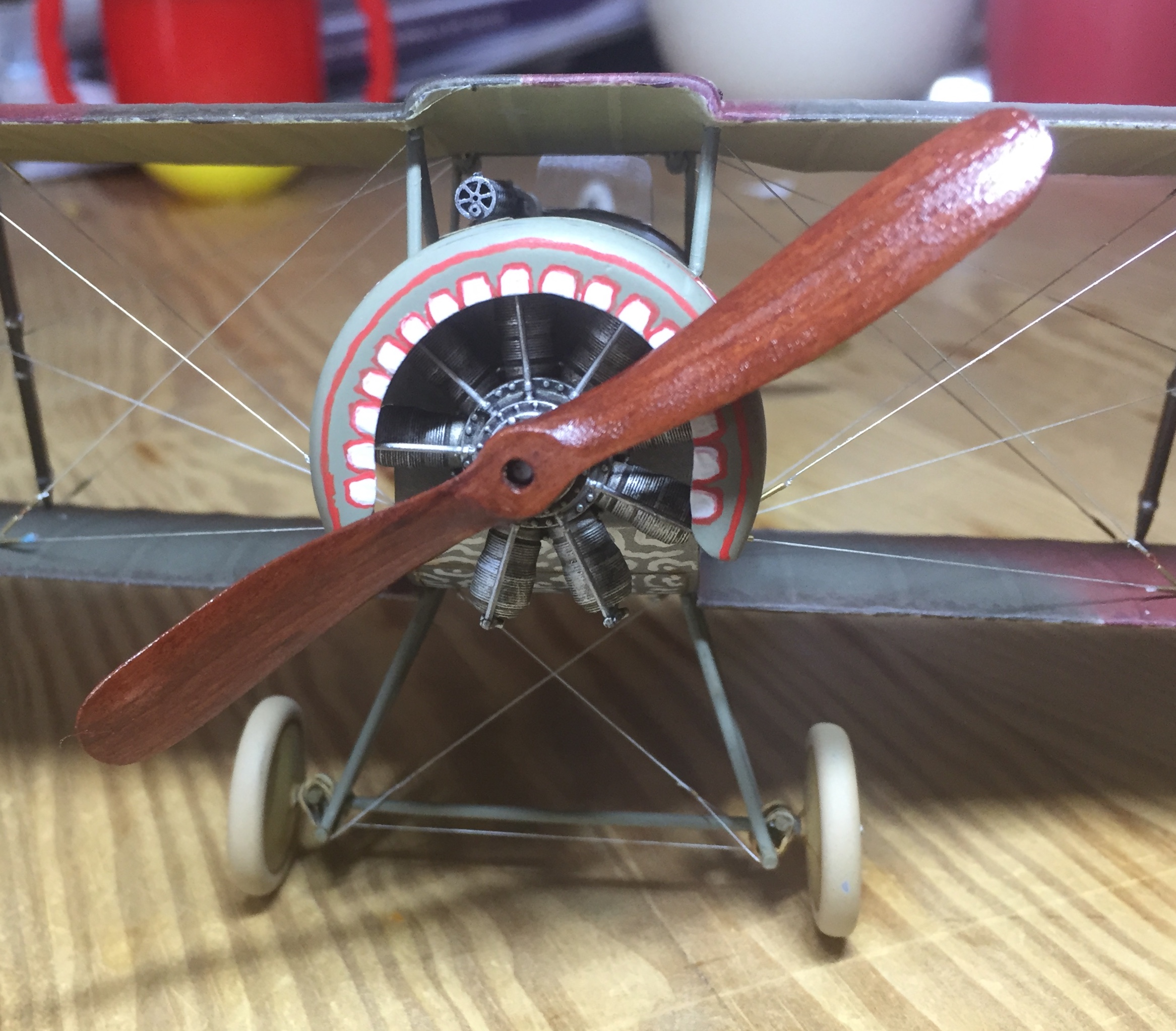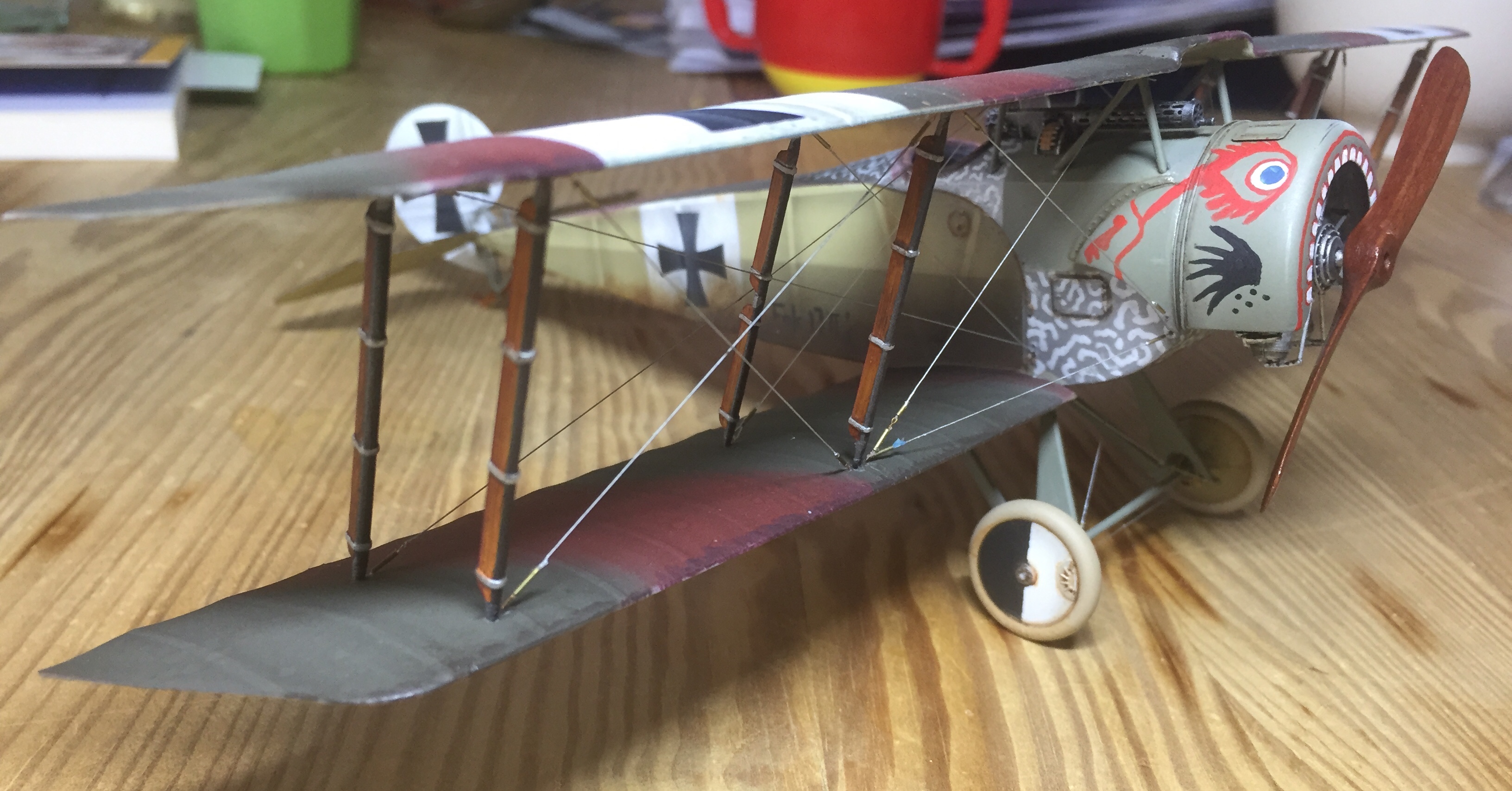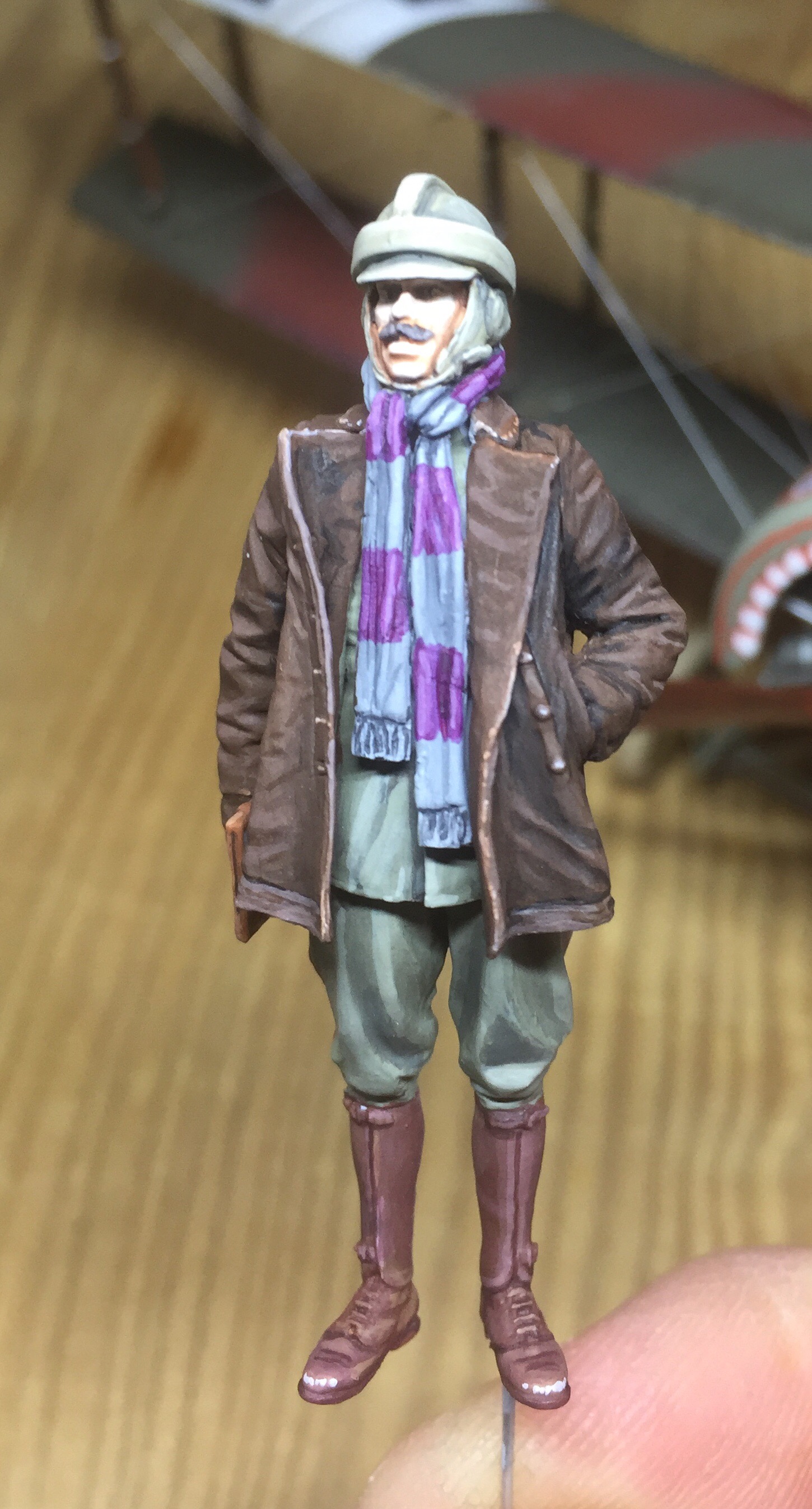Hello friends,
Rick, Richard, Frank, Manni, Xan, Steve, Lance, Stephen, Jeroen, Mark, Ian, Ermeio and Ken. thank you for your nice comments!
Yes Richard, I used Revell Aqua Color 46 Nato Olive for the green and 37 Brick red for the brown. I didn't get better tones from any other manufacturer. These and Revell 87 are the last Revell colors I use, I thin them down with window cleaner and they spray quite well.
My god! I missed this mount.
beautiful work Borsos congratulations!
original plane , original decoration (how do you know it is a Grasshopper ?) and very well painted
have you a fig to represent the dog?
I would like to know a little bit more about the camouflage.
Is this the first camouflage try ? if I am ,ot wrong , in 1916, most of german plane are linen color , blue white or brown isn't it?
Xan
Xan, thanks for your questions. I read somewhere that after Grünzweigs arrival at the Jasta (he was an artist) the Jasta was called "Grashüpferstaffel" (grasshopper squadron). But I cannot remember where I read this at the moment.
Regarding the
camouflage: It was long time common sense between modern researchers that until mid 1916 all German aircraft were either delivered in CDL or in a so called "sky camouflage" of white or a very pale blue. Meanwhile we seem to know that camouflage was introduced much earlier and many Fokker Eindeckers were in fact painted field grey.
Anyway, sometimes in mid-1916 (some books say June, others say August) Idflieg ordered to camouflage all airplanes with brown and green colors. The undersides should be painted pale blue. It obviously took a while until this directive was widely realized. There are just a few C types of the first generation like Aviatiks, Rumplers or Albatros C. I, that I have seen with brown-green camouflage on, but there were in fact many Rolands C II and Albatros C. III, C. V. C. VII, Aviatiks C. II and III or LVG C. IVs camouflaged.
There also exist many photos of first German biplane scouts, the early Fokker D-types and Halberstadt D-types in CDL or sky camouflage, but many were camouflaged as well. Regarding the Fokkers, many D. IIs were just camouflaged on the upper surfaces of the flying surfaces and the fuselage. Later ones got their fuselage sides camouflaged as well. When the first Albatros D fighters arrived, camouflage was widely common and I never saw an Albatros D. I or D. II with uncamouflaged, CDL wings. In April 1917 Idflieg changed its directive to avoid confusion with Allied camouflage and ordered that the brown was replaced by mauve. That's the story in short. It would be very interesting to read these directives from 1916 and 1917 in its original, but I never did yet. I don't know where they are published or if they are published at all.
Meanwhile I finished rigging on the Fokker and soldered a footstep out of brass (Frank, can you see your influence...

). I added a windscreen and worked on the prop, in this case a Garuda. It still needs some coats of clear and its labels...



At last I prepaired a pilot from CSM to stand on the base next to the airplane

The figure is, like all CSM offerings I know, wonderfully sculpted and cast.
Best regards
Borsos